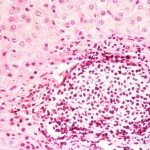Link to Pubmed [PMID] – 9281502
Virology 1997 Sep;235(2):228-34
We previously observed that warts induced by an isolate of cottontail rabbit papillomavirus (CRPV) showed incomplete instead of systemic regression in some domestic rabbits. We report that the viral isolate contained, as a major component, a CRPV strain (CRPVb) showing an unexpectedly high divergence in the E6 and E7 open reading frames (ORFs), compared to the prototype CRPVa present in the isolate as a minor component. The E6 and E7 oncoproteins of CRPVa and -b disclosed only 87.5% identical amino acids and differed in size by three and two amino acids, respectively. This divergence involved (i) a great number (4.4%) of nucleotide substitutions and a high rate (83.3%) of nonsynonymous mutations; (ii) mutations changing the E6 and E7 stop codons; and (iii) in-frame sequence insertions in the E6 ORF (18 nucleotides) and downstream of the mutated E7 stop codon (6 nucleotides), both likely to result from a duplication of adjacent sequences. These extensive differences could account for distinct biological and antigenic properties. Strikingly, only four (0.8%) amino acids of the L1 major capsid protein were variable. Thus, it seems likely that sequence duplications and mutations affecting stop codons exert a strong selection pressure on the fixation of nonsynonymous mutations and that phylogenetic calculations based only on point mutations may misevaluate the time scale of the evolution of papillomaviruses.

